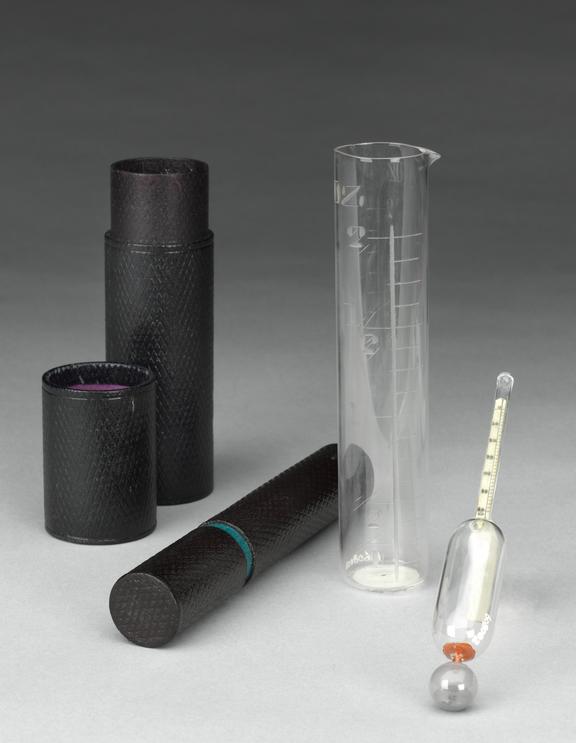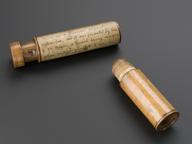





Urinometer with measuring cylinder in leather covered cylindrical case, English(?), 1830-1900
A urinometer is a type of hydrometer. It compares the weight of urine to an equal volume of water to measure the specific density. The urinometer is placed in a measuring cylinder full of urine. It floats because the urine is denser than the mercury. The level the urinometer floats at is read off the scale. This is used to diagnose illness. The urinometer is marked with the word ‘DIABETES’. This indicates it was used to diagnose the disease.
Details
- Category:
- Clinical Diagnosis
- Collection:
- Sir Henry Wellcome's Museum Collection
- Object Number:
- A608002
- Measurements:
-
overall: 142 mm 35 mm, 0.09kg
- type:
- hydrometer and urinometer




